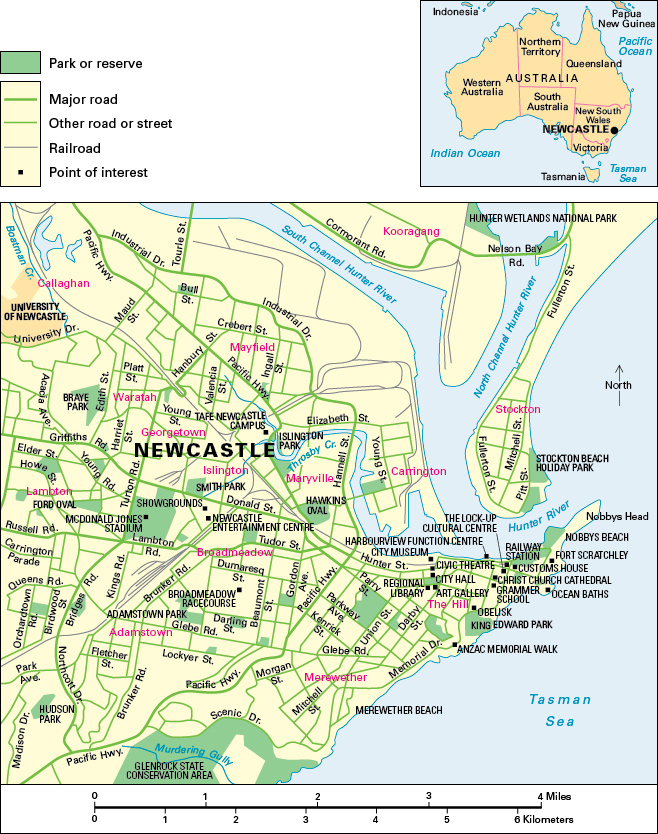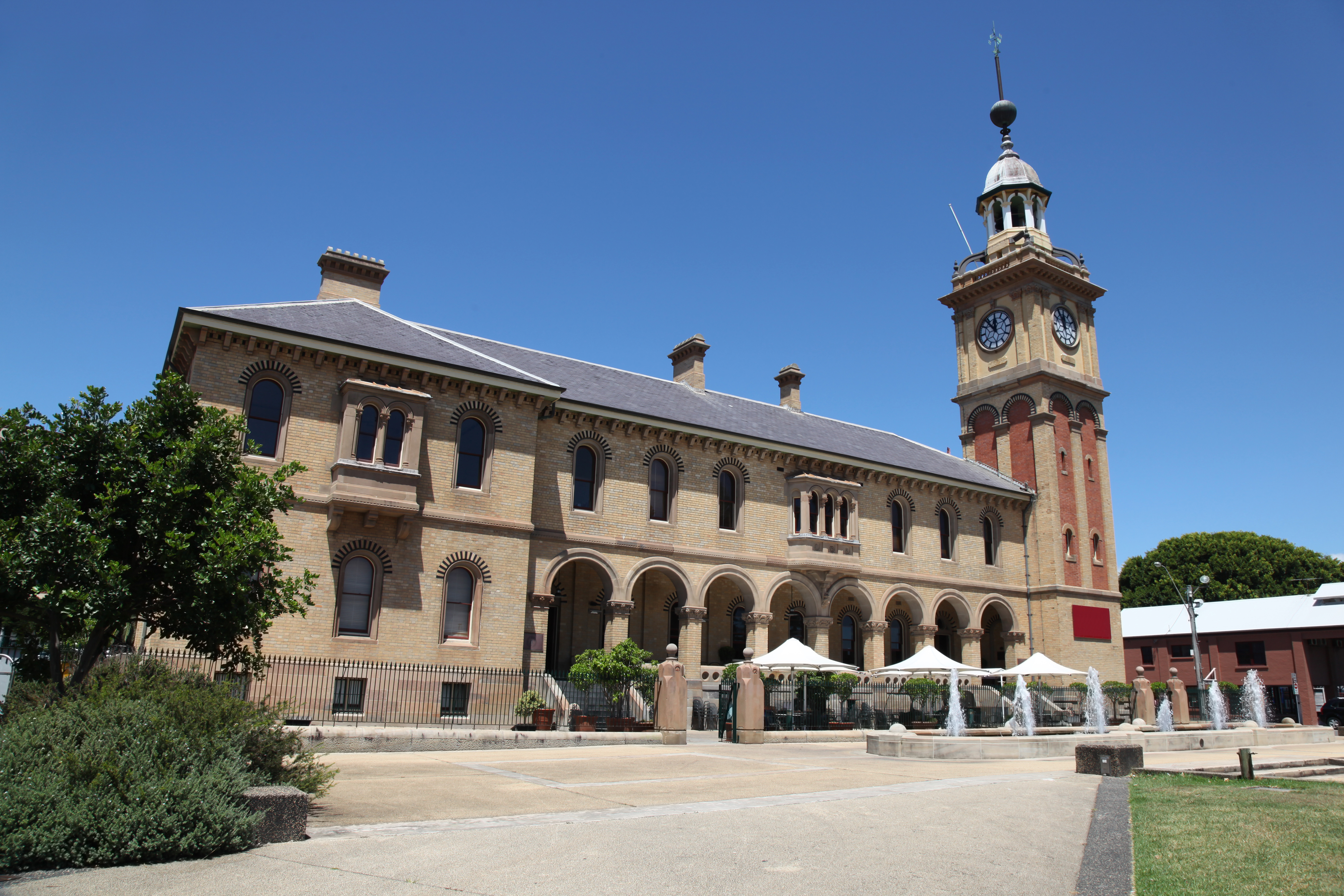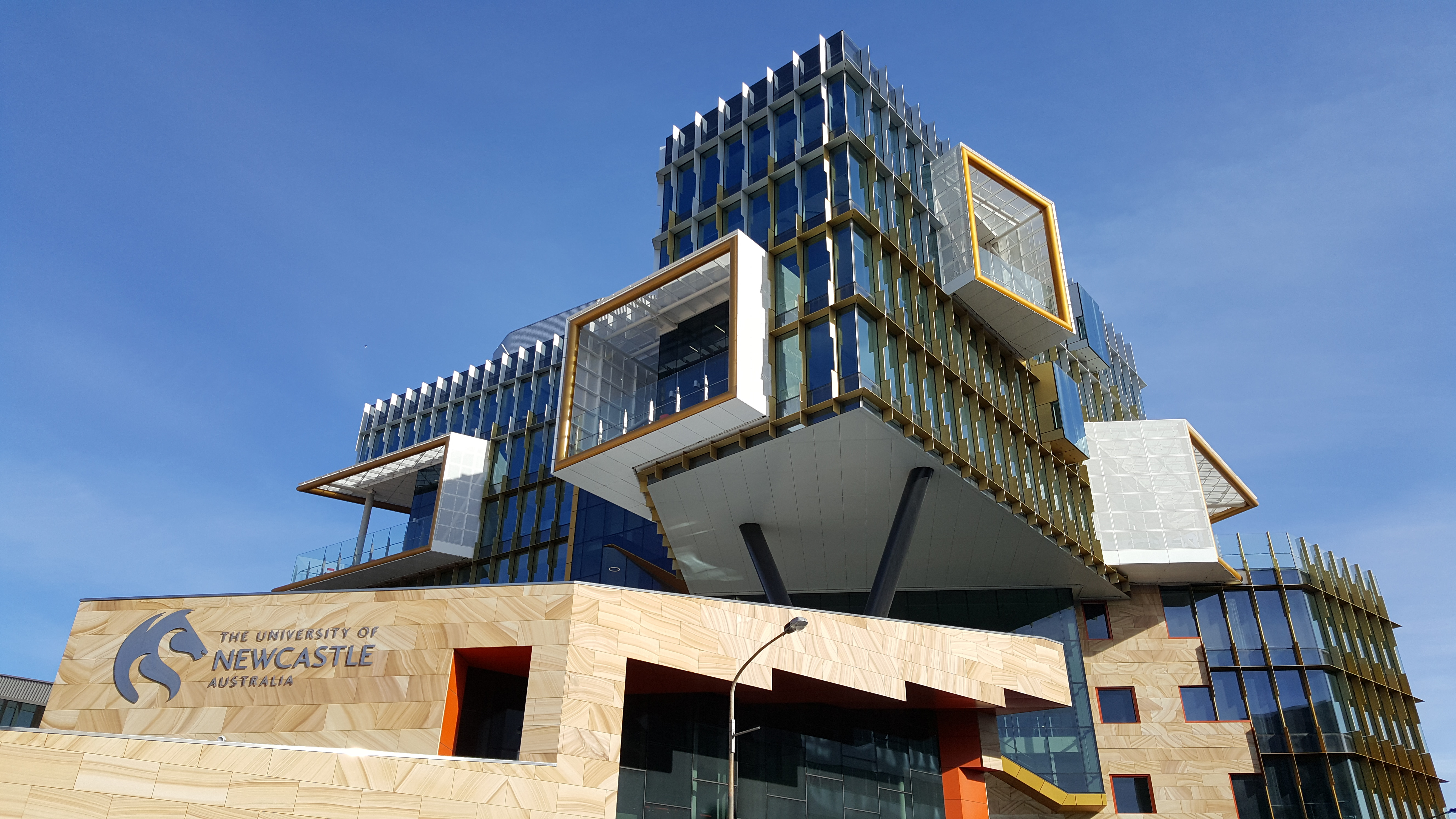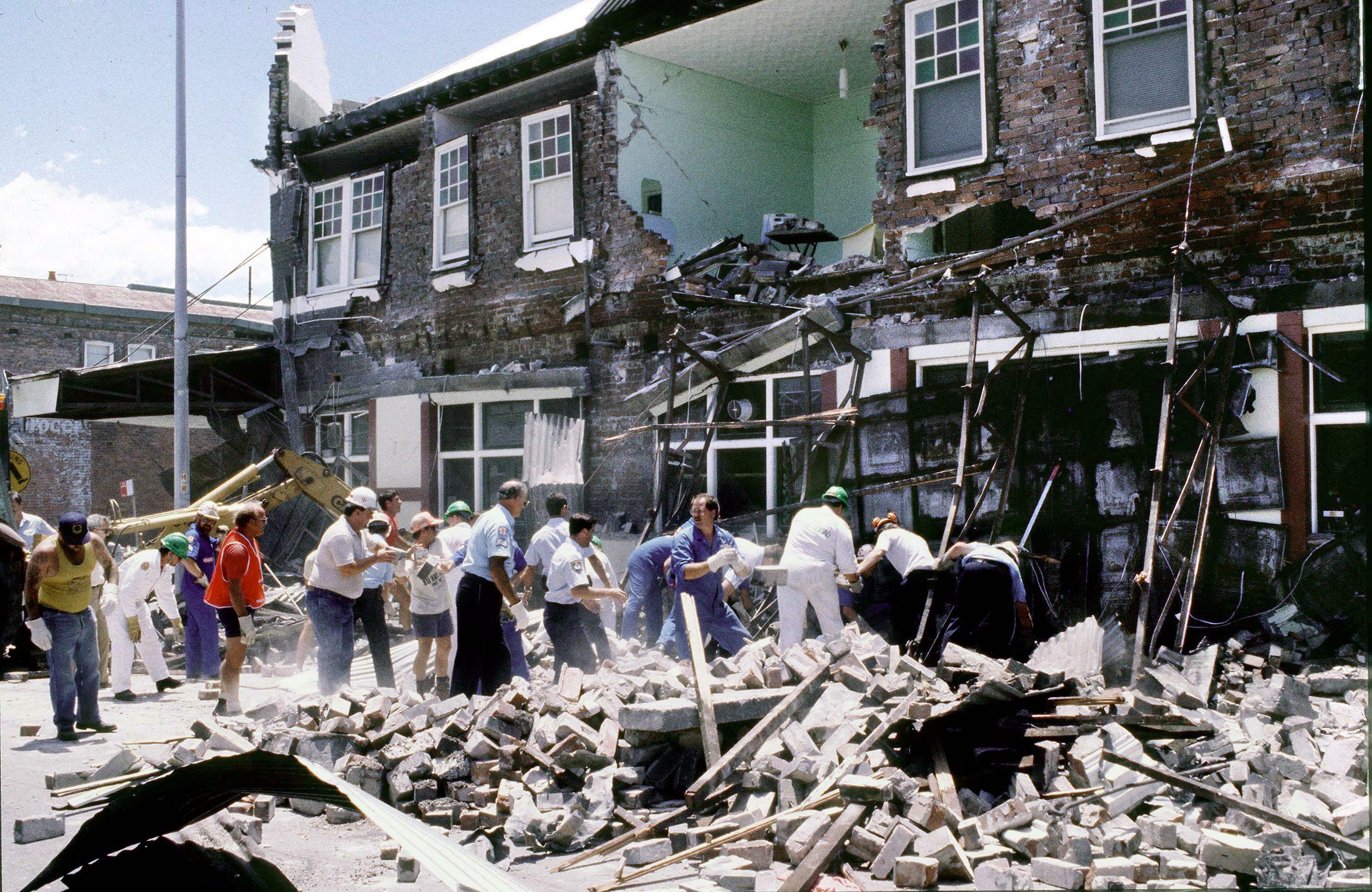Newcastle (pop. 348,539) is one of the largest cities in the Australian state of New South Wales. The city lies along the southeast coast of Australia, about 70 miles (115 kilometers) north of Sydney.
The city
sits at the mouth of the Hunter River, north of Lake Macquarie. Many Newcastle buildings date from the 1800’s, including Fort Scratchley, the Customs House, the Public School, and the Railway Station. The Lock-Up Cultural Centre is a museum in the former Newcastle Police Station, which also dates from the 1800’s. The city is the home of the University of Newcastle.


The beaches of Newcastle are considered some of the best surfing spots in Australia. Mark Richard, a four-time world champion surfer during the 1970’s and 1980’s, grew up surfing the waves around Newcastle.
Sports are an important part of life in Newcastle. The city hosts a National Rugby League team, the Newcastle Knights. It also hosts the Newcastle United Jets FC, a leading professional soccer club. FC stands for football club. Soccer is called football in Australia and much of the world.
The Hunter River is an important habitat for local shorebird populations. It shelters a diverse range of plants and animals, including the endangered green and golden bell frog. Mangrove trees cover a large region near the mouth of the river.
Economy.
Newcastle is an important industrial and shipping center. The Hunter Valley is a major coal-mining area, and Newcastle Port is one of the largest coal-exporting harbors in the world. Historically, Newcastle’s other major industries have included the production of steel and other metals. In the 2000’s, the city’s biggest employers included health services and the University of Newcastle.

History.
The Awabakal and Worimi peoples traditionally lived on the land that would become the city of Newcastle. The area around Newcastle was first encountered by European colonists in 1797, when British soldier John Shortland stumbled upon the Hunter River while searching for escaped convicts.
Permanent European settlement of Newcastle began in 1804, when convicts were sent there from Sydney. Newcastle served as a place of punishment for prisoners until 1824.
The first railway in Australia was built in Newcastle in 1831. In 1835, the Great North Road was completed, connecting Sydney and Newcastle. The road was built over 10 years using convict labor. Newcastle received the status of a city in 1885.
In 1915, the Broken Hill Proprietary Company (known as BHP) opened its first steelmaking plant in Newcastle. BHP was a key developer and employer in the region throughout the 1900’s. It had been incorporated in 1885 as a mining company based in the town of Broken Hill in western New South Wales.
In 1989, an earthquake struck Newcastle, killing 13 people and causing billions of dollars’ worth of property damage. The strongest shock had a magnitude of 5.6 on the Richter scale, a system for measuring earthquake strength. Another natural disaster devastated the region in 2007, when a June storm produced rapid flooding that killed 10 people and displaced thousands more. 
Newcastle’s economic dependence on heavy industry declined in the late 1900’s and early 2000’s, particularly after BHP closed its Newcastle steel mill in 1999. During the early 2000’s, new growth in such areas as education, healthcare and social services, retail trade, and tourism have given the city an increasingly diversified economy.
